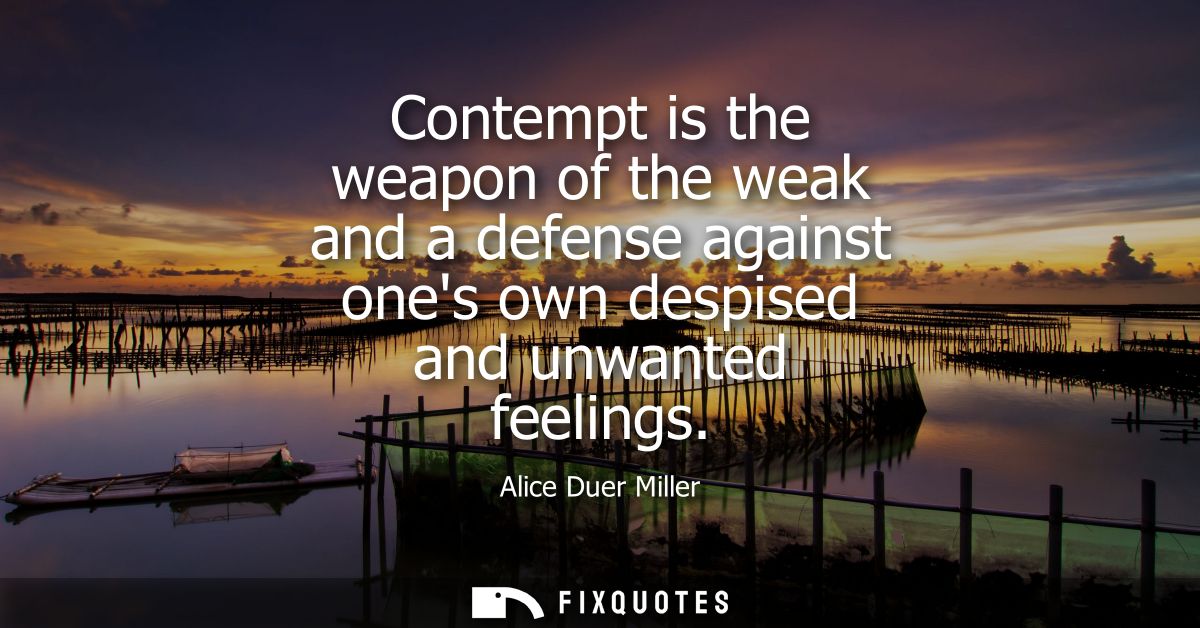"Contempt is the weapon of the weak and a defense against one's own despised and unwanted feelings"
About this Quote
Contempt arises as an emotional maneuver often engineered by those who feel vulnerable, threatened, or inadequate. Rather than confronting the discomfort within, persons wielding contempt project their disowned feelings onto others, leveraging disdain as a shield. The phrase "weapon of the weak" points to the paradox of contempt: it masquerades as superiority but, in fact, reveals a position of inner weakness. Instead of genuine confidence or power, the individual displays scorn, hoping to diminish another and, by extension, to elevate themselves , if only momentarily.
This pattern distorts personal relationships and hinders growth. Deflecting internal turmoil by despising others may offer fleeting relief, yet it precludes self-examination or healing. There is an implied self-protection, a defense mechanism, at work: by focusing negative energy outward, the person avoids engaging with the “despised and unwanted feelings” within themselves. The act of expressing contempt thus serves a dual purpose. First, it temporarily empowers the individual, who gets to play judge and jury, setting themselves above the target of their scorn. Second, it avoids the vulnerability required to acknowledge and process one’s own insecurities, shame, or self-disgust.
Moreover, contempt poisons connection and erodes compassion. It thrives on separation, maintaining the illusion that those who are scorned are fundamentally lesser. But at its heart, this behavior does not derive from true strength or ethical standing; rather, it is a response rooted in fear, pain, or unresolved conflict within the self. By confronting and accepting these inner dissonances, individuals can undermine the allure of contempt and replace it with understanding or empathy , traits essential for authentic relationships and personal resilience. Ultimately, contempt reflects a displacement of inner struggle, signaling where self-inquiry and compassion are most needed.
More details
About the Author

